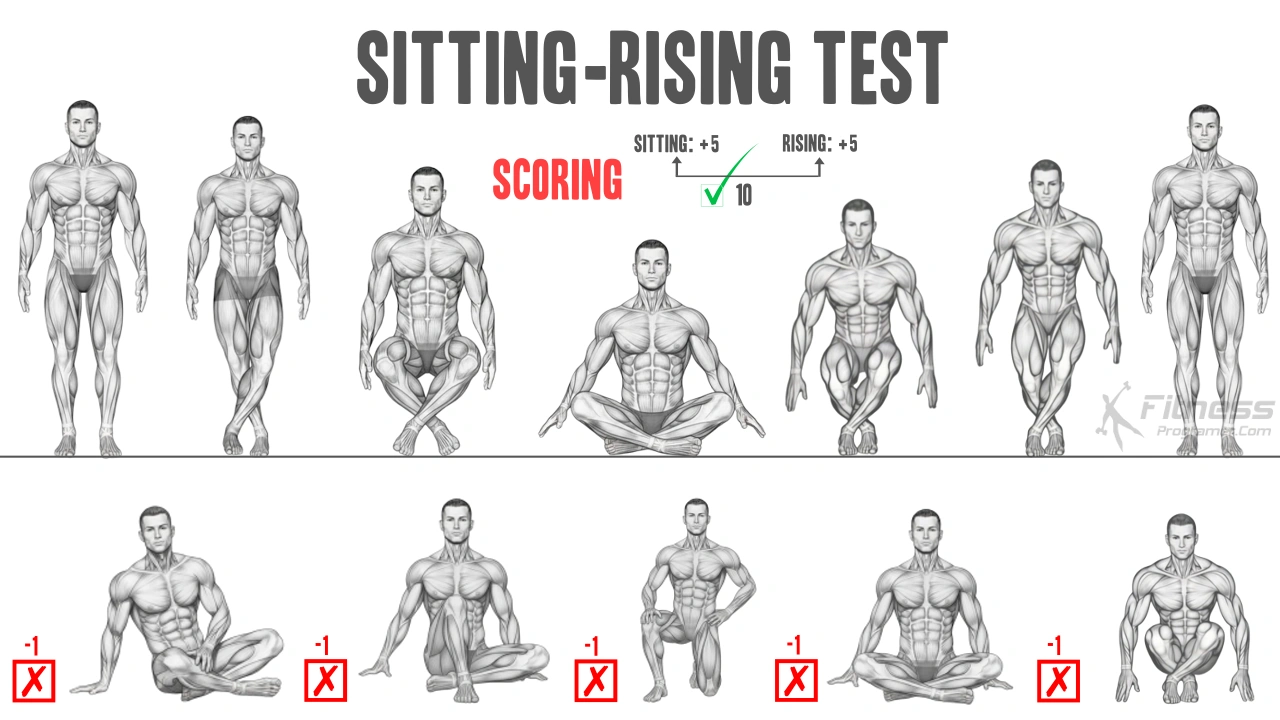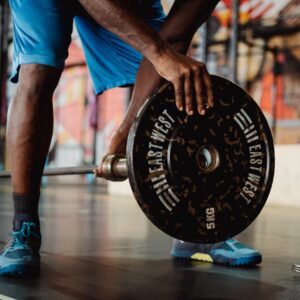Contents
The Sitting-Rising Test (SRT) is a deceptively simple assessment where you try to sit down on the floor and stand back up with minimal support. On the surface, it may look like a party trick or a quirky balance challenge, but research has shown that it is closely linked to health, independence, and even mortality risk.
Developed by Brazilian physician Dr. Claudio Gil Araújo and colleagues in the early 2010s, the test has since been recognized worldwide as a practical tool for evaluating functional fitness—the kind of strength, balance, and mobility needed to perform daily tasks. Unlike conventional strength or endurance tests, the SRT provides insight into whole-body movement quality and its relationship to long-term health outcomes.
This article breaks down how the sitting-rising test works, what it measures, why it is considered a predictor of longevity, and how you can improve your performance.
What Is the Sitting-Rising Test?
The Sitting-Rising Test requires you to sit on the floor and then rise back to a standing position without using your hands, arms, or knees for support. The test is scored out of 10 points, with deductions for each body part used for assistance.
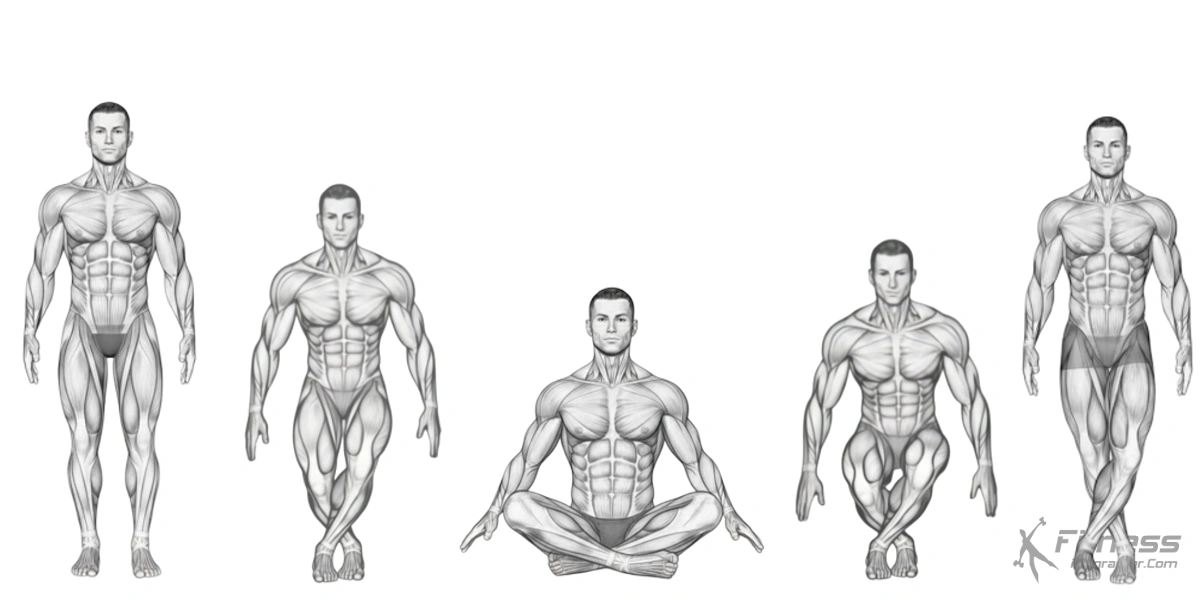
How It Works
- Begin standing upright with feet shoulder-width apart.
- Lower yourself into a cross-legged seated position on the floor.
- Stand back up from the floor.
- The goal is to complete the movement as smoothly as possible without using external support.
Scoring System
The SRT uses a 10-point scoring method:
- Starting score: 10 points (5 for sitting, 5 for rising).
- Subtract 1 point for each support used (hand, knee, forearm, side of leg).
- Subtract 0.5 points for partial loss of balance, wobbling, or instability.
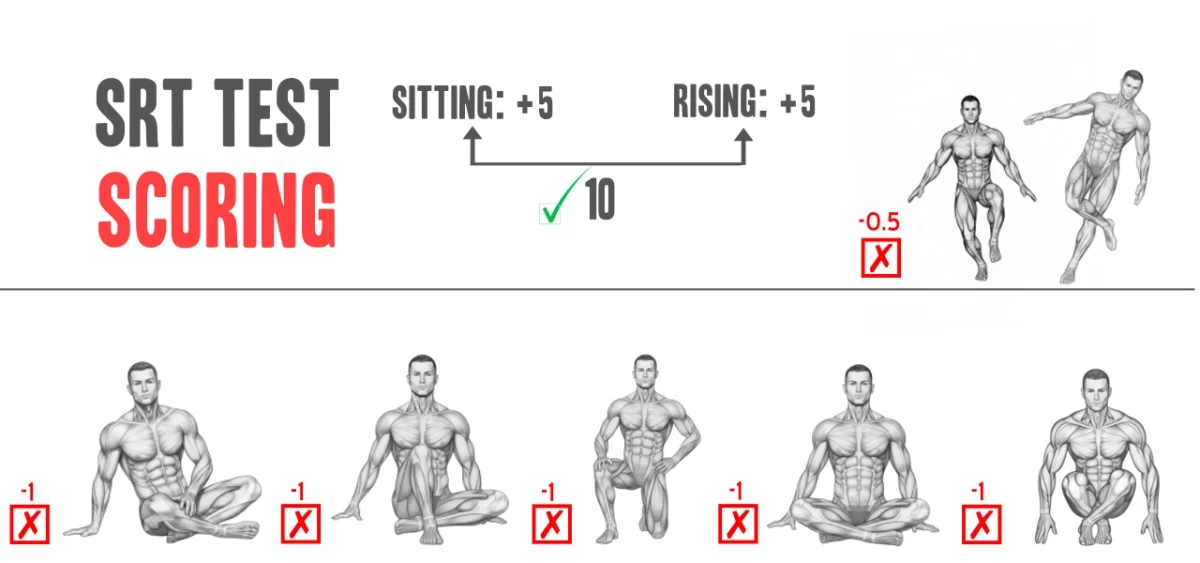
Examples
- Score of 10: You sit and rise without touching the ground or losing balance.
- Score of 8: You use one hand for support while sitting down and one knee when standing.
- Score of 6 or less: You require multiple supports or show significant instability.
Why the Sitting-Rising Test Matters
1. Predictor of Longevity
A landmark study by Araújo et al. (2012) followed over 2,000 adults aged 51–80 for an average of 6 years. Results showed that individuals who scored 8 or higher had significantly lower mortality rates compared to those scoring 3 or less.
The takeaway: The ability to sit and rise with little support is strongly correlated with overall health, vitality, and life expectancy.
2. Tests Functional Fitness
The SRT assesses a blend of:
- Muscular strength (legs, core, hips)
- Flexibility (hips, hamstrings, ankles)
- Balance and coordination (neuromuscular control)
Unlike isolated gym tests (bench press, squat max, etc.), it reflects how well your body can perform integrated, real-world movements.
3. Indicator of Independence in Older Adults
Being able to move from floor to standing without assistance is crucial for maintaining independence, especially in older age. A poor SRT score may indicate a higher risk of falls, mobility issues, or reliance on caregivers.
What Muscles and Skills Are Involved?
Performing the SRT requires a coordinated effort of multiple body systems:
- Lower body strength: Quadriceps, glutes, hamstrings, and calves provide force to lower and raise the body.
- Core stability: Abdominals and spinal stabilizers keep the torso upright.
- Flexibility: Hip, knee, and ankle mobility are critical to smoothly transitioning to the floor.
- Balance and proprioception: The nervous system must coordinate weight distribution to prevent falls.
This makes the SRT a holistic fitness measure rather than a single-component test.
Sitting-Rising Test and Health Research
The scientific literature has highlighted the predictive value of the SRT:
- Araújo et al. (2012, European Journal of Preventive Cardiology): Found that low SRT scores were significantly associated with higher all-cause mortality. Individuals scoring below 8 had a 5–6 times higher risk of death than those with perfect scores.
- Brito et al. (2014, Clinical Interventions in Aging): Showed that SRT scores correlate with musculoskeletal fitness and can be used as a screening tool for fall risk.
- Research on functional tests: Similar to grip strength and walking speed, the SRT belongs to a class of functional aging biomarkers that predict survival better than chronological age alone.
How to Improve Your Sitting-Rising Score
Improving your SRT score involves addressing its key components:
1. Strength Training
- Squats, lunges, step-ups: Build lower-body strength.
- Core work (planks, side planks, leg raises): Stabilize your trunk.
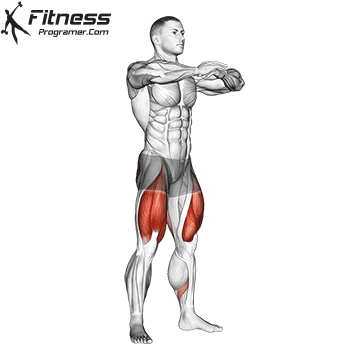
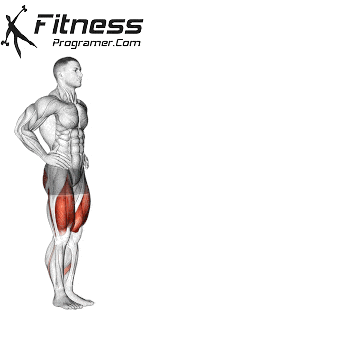
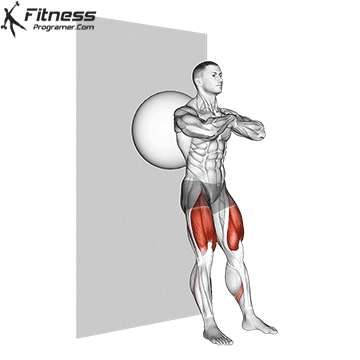
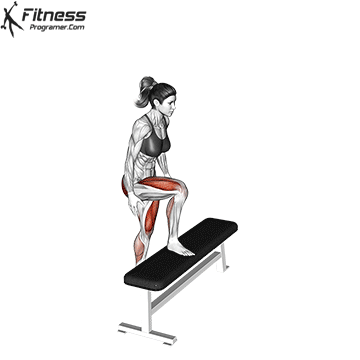
2. Flexibility and Mobility
- Hip openers: Pigeon stretch, hip flexor stretches.
- Hamstring mobility: Forward folds, dynamic leg swings.
- Ankle mobility drills: Heel raises, dorsiflexion stretches.
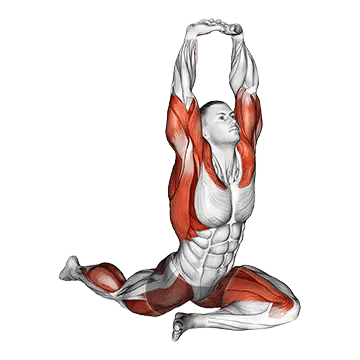
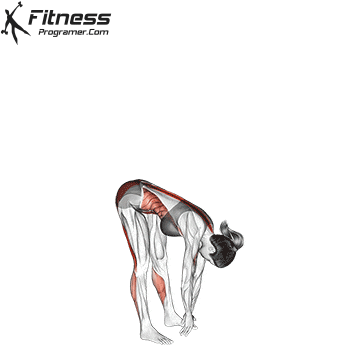
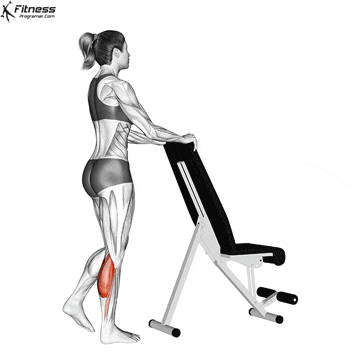
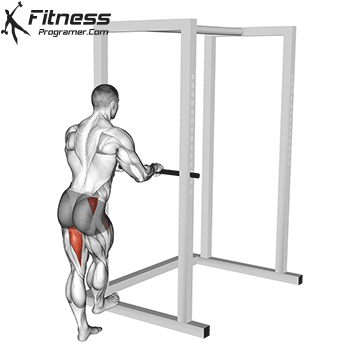
3. Balance Training
- Single-leg stands: Practice holding balance for 30–60 seconds.
- Dynamic balance drills: Walking lunges, step-downs, Bulgarian split squat.
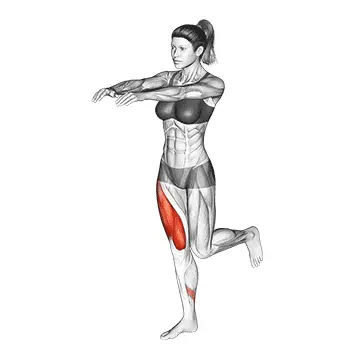
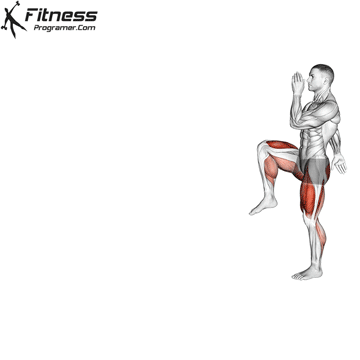

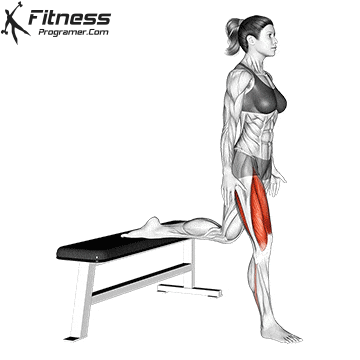
4. Practice the SRT Itself
- Start with using supports (hand or knee).
- Gradually reduce support as strength and balance improve.
How Reliable Is the Sitting-Rising Test?
While the SRT is useful, it should not be the sole measure of health. It works best as part of a comprehensive assessment, alongside other tests such as:
- Grip strength
- VO₂ max or cardiovascular tests
- Gait speed
- Flexibility screenings
The SRT is a screening tool, not a diagnostic test. A low score suggests areas to improve, but should not be taken as a direct prediction of mortality without broader health evaluation.
Practical Applications
- For individuals: A quick way to check functional mobility at home.
- For trainers and coaches: A screening tool to identify mobility or strength limitations.
- For healthcare providers: A non-invasive predictor of fall risk and independence in older patients.
Key Takeaways
- The Sitting-Rising Test is a powerful yet simple measure of functional health.
- Higher scores are linked to better mobility, strength, flexibility, and lower mortality risk.
- You can improve your score through strength, mobility, and balance training.
- While valuable, it should be considered as part of a broader health and fitness evaluation.
References
- Araújo, C. G. S., de Souza, E., de Medeiros, F. M., & Castro, C. L. B. (2012). Ability to sit and rise from the floor as a predictor of all-cause mortality. European Journal of Preventive Cardiology, 21(7), 892–898. Link
- Brito, L. B., Ricardo, D. R., Araújo, D. S. M. S., Ramos, P. S., Myers, J., & Araújo, C. G. S. (2014). Ability to sit and rise from the floor as a predictor of all-cause mortality. Clinical Interventions in Aging, 9, 139–144. Link
- Guralnik, J. M., Ferrucci, L., Simonsick, E. M., Salive, M. E., & Wallace, R. B. (1995). Lower-extremity function in persons over the age of 70 years as a predictor of subsequent disability. New England Journal of Medicine, 332(9), 556–561. Link

